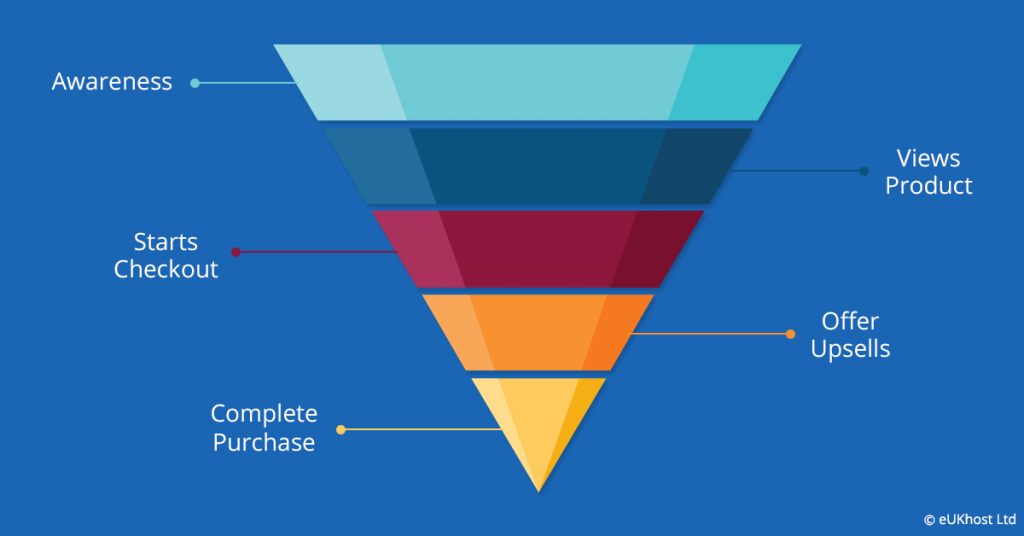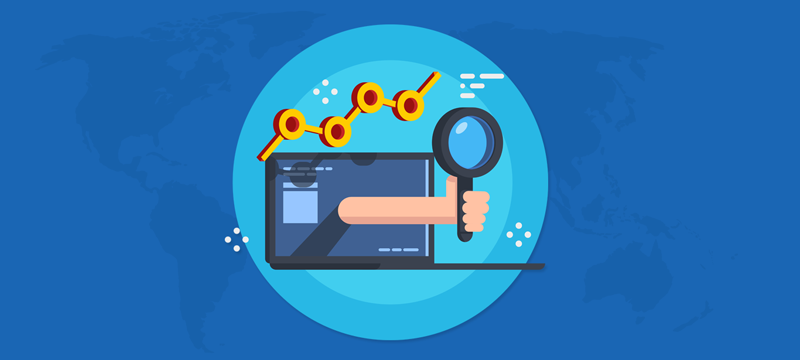You have a new eCommerce store where you are trying to claim your bit of the market. You have done your product research; your ads are in place and you’re sure people will visit your e-commerce store and fill their shopping bags but you keep waiting and this doesn’t happen?
What went wrong? You know that lots of people are visiting the website but then it seems very few of them are converting. Let us tell you what is happening.
Customers won’t start buying from you right from their first visit to your visit. However, there is something you can do to ensure that they buy from you in the long-term and keep coming back to you by introducing them to your optimised ecommerce conversion funnel.
What exactly is a conversion funnel you might ask?
In simple words, a funnel is a graphically represented as an inverted triangle which represents the journey of a potential customer till the time, he or she becomes a paying customer.
It is an illustration from the time a customer first becomes aware of your brand till the time that he makes a purchase.

Funnels are at three levels
- Top of the funnel
- Middle of funnel
- Bottom of the funnel
Within these 3 levels are the 5 stages that represent the five stage of the buyer’s journey
- Step 1 – The potential customer becomes aware about your store and visits it
- Step 2 – Visitor checks out the product
- Step 3 – Proceeds to the checkout stage
- Step 4 – Sees other products and offers that you have to offer (also known as upsells)
- Step 5 – Completes purchase
The top of the funnel is where potential customers first become aware about your brand and initially engage a little bit with your ecommerce site such as visiting your pages or viewing your products
The middle stage of the funnel is where the engagement of the prospects with the company increases and there is a greater likelihood of purchasing
Finally, the bottom of the funnel represents the final step where the prospects become customers by buying from your website.
The shape of the funnel is inverted, and it narrows out towards the bottom because the initial number of people that visit the website never completely become customers. The goal is to optimize each stage of the funnel so much that friction is removed at each stage and as many people can be retained inside the funnel until they make a purchase.
The most important KPIs for conversion funnel optimization
Dozens of KPIs are but tracking them all can make you feel like a headless chicken running around. Therefore, we feel tracking certain KPIs make the most sense when it comes to your ecommerce website. The Key Performance Indicators (KPIs) are very important to track so that you are aware of how each stage of the funnel is performing. The five most effective conversion funnels to track will be:
Traffic
The simple truth about online business is that there is no business without traffic. To be part of the conversion funnel, people need to find your business. Traffic can be generated from numerous sources which could be organic or inorganic sources but traffic needs to grow steadily.
Finding out which channels you’re getting traffic from is important as this is the top of the funnel process which is important to make prospects part of your conversion funnel. Depending on your source of traffic you can invest time and money into that particular channel.
For example, if you’re getting great traffic from search you should invest in SEO and content creation. If Social media is bringing you more prospects, invest in social media.
Conversion rate
When you track your conversion rate, you understand how well the audience receives your offers. Whether you’re trying to convince people to sign up for a email list or trying to incentivize a sale, the metrics of these will help you understand your audience better and then apply your learning to real life scenarios.
Bounce rate and percentage of returning customers
The bounce rate is another important metric in your conversion funnel as it can tell you how many of your website visitors leave after visiting just one page. The higher the bounce rate, the more the need for you to focus on your website’s stickiness. Call-to-Actions for various offers and more incentives to visit other pages can be some of the ways to reduce the bounce rate.
Returning visitors is another metric to track that helps in finding out where your website is placed in terms of trust, customer sentiment, customer service and price.
Sales
If your thousands of visits to the website is not resulting in adequate sales, then there is an issue at hand. Sales should ideally increase over time but if this is not happening this means that there is something wrong in the middle of your conversion funnel. Engagement that is not resulting in conversion needs more focus on the action stage of the funnel.
Cart and funnel abandonment
Many people put items in their shopping carts and then leave the page without proceeding to checkout. This suggests a problem at the middle of the funnel again and a problem in the checkout process.
The checkout flow needs to be improved and cart abandonment emails can be sent to reminder the prospects and they can even be invited back with a discount code sometimes to reclaim a lost sale.
While most people focus on cart abandonment, they forget to focus on funnel abandonment to see where customers are leaving your conversion funnel and saying no to your website.
This can be done by manually checking the visitor flow to your website or by setting up a conversion funnel in Google analytics.
Conclusion
Collating the above information periodically can be the key to running a data driven e-commerce business where the data can help to break down strategies and pinpoint areas that require attention. This can translate to campaigns that can be launched and managed with ease.
If you are looking for high-performance hosting to help your site load faster on mobile devices, take a look at our VPS packages.



